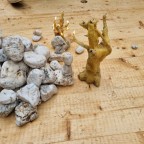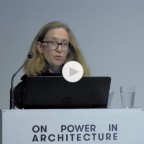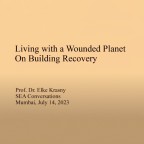THE WORLD IN A FEW STEPS | DIE WELT IN WENIGEN SCHRITTEN
WIE WIR ARBEITEN, Elke Krasny
AUSSTELLUNGSBETEILIGUNG IM < ROTOR >
With contributions by: Marianna Asatrjan, Mikael Asatrjan, Cactus, Paola di Bello, Joseph Dim, Aslan Esiev, Marlene Hausegger, Helsinki Viertelradio, Franziska Hederer, Michael Hieslmair / Michael Zinganel, Claudia Holzer, ILA, Christian Kasper / Josef Wurm / Georg Dinstl, Elke Krasny, Damian & Delaine Le Bas, Nana Mandl, Maryam Mohammadi, Norbert Prettenthaler, Nicole Pruckermayr, raus aus der box, Tere Recarens / Daniela Paes Leão, resanita, eva helene stern***, Stefan Schmitzer / Verena Michelitsch / Karin Lernbeiß, Edda Strobl, Škart, Bruno Toya – and many, many people who have taken part in workshops and participatory projects
Eröffnung: Samstag, 25. September 2010, 18 Uhr
im Rahmen des steirischen herbst 2010
Ausstellungsdauer: 26. September – 20. November 2010
Öffnungszeiten: MO–FR 10.00–18.00, SA 12.00–16.00
Im steirischen herbst auch sonntags 12.00 – 16.00
An Feiertagen geschlossen
Dialogführungen durch die Ausstellung und Entdeckungstouren durchs Viertel für Schulklassen und andere Gruppen nach Voranmeldung: rotor@mur.at, 0316/ 688306
In the exhibition all the works that were produced in the frame of workshops and participatory projects in spring and summer 2010 are on display. Exhibition venues are < rotor > and several locations in the Annenviertel area.
The city belongs to everyone, but who actually develops it? In the Annen district of Graz, a vibrant, very international part of the city, a wide variety of different forms of coexistence are being pragmatically tested every day, with resourcefulness and a gift for improvisation. The long-term “Annenviertel!” project uses a wide array of artistic and cultural strategies to demonstrate how this urban space, in which contrasting worlds are just a few steps away from each other, can be shaped and the voice of those who live here can be amplified.
For all the questions and problems facing this area, the challenge for those involved in the project is clear: to join forces to build a future in which transcultural coexistence has become normal and in which changes in the urban landscape as a result of immigration are not perceived as a threat. For the city is not – as some people would have us believe – conflict and fear, but above all an opportunity.



